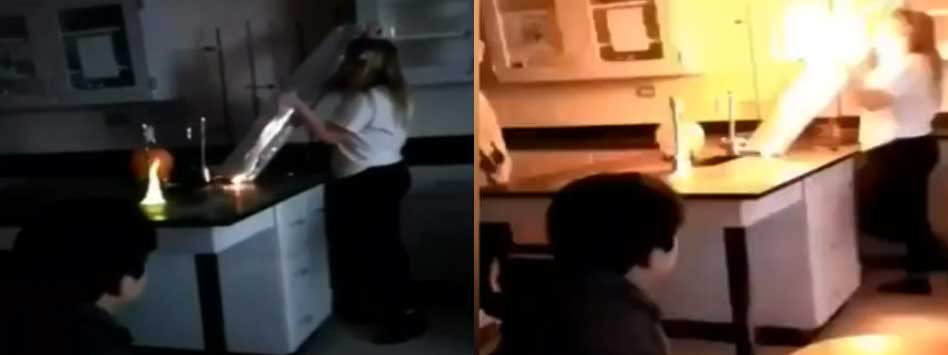A high school science teacher in Duluth, Georgia, wanted to show her class an attention-getting demonstration for Halloween involving gas vapor, a pumpkin and a flame. But things did not go as intended. Students watched as flames surrounded their teacher's face, burning her hair and skin.
Principal Eric Davidson described the event as "rare."
The Laboratory Safety Institute wants to remind teachers and school administrators that rather than asking, "How rare is a given incident," the question should be, "What is the acceptable number of times to have a fireball explode in a classroom?" Of course, we would all say zero.
The fact is, incidents such as these are preventable by taking a few simple precautions, such as using a shield to protect the teacher and students. The Laboratory Safety Institute maintains a collection of more than 5,000 accounts of similar science "accidents." In our database, there is not a single case in which someone was hurt when a shield was used.
The National Fire Protection Association's "Fire Protection for Laboratories Using Chemicals" says in chapter 12:
Instructor Responsibilities. Where instructors are performing demonstrations or students are conducting experiments using hazardous materials, the instructor shall be required to perform a documented hazard risk assessment, provide a safety briefing to students, provide adequate personal protective equipment (PPE), and place a safety barrier (as required) between students and the demonstration or experiment to prevent personal injury.
These precautions were not taken, as can be easily seen in a video taken by a student and circulated on social media.
The teacher's injuries were minor, and no students were injured, but this situation could easily have been much worse.
The Laboratory Safety Institute is committed to not just making science demonstrations safe, but making safety an integral part of education. Learn more about scholarships for safety education offered exclusively to K-12 teachers.
Author: Connor Michael

